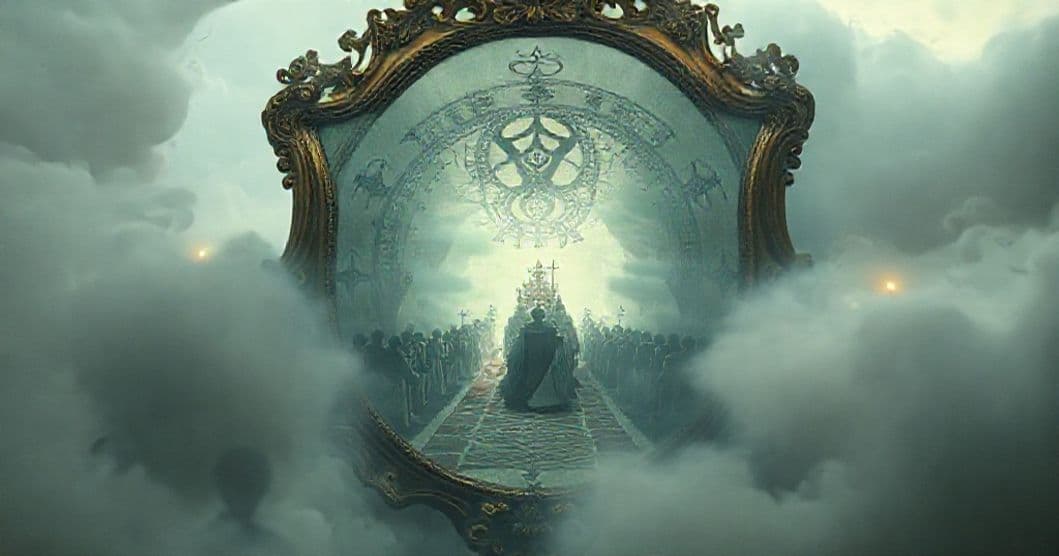When funeral sigils appear alongside mirrored visions in dreams, they don’t merely foretell endings—they reflect a deeper dialogue between your conscious and unconscious self. These dreams blend the imagery of closure (funerals) with the psychological act of looking inward (mirrors), creating a symbolic space where unfinished emotions or identity shifts find expression. Rather than fearing death’s imagery, consider this a call to examine what you’re ready to release, as the mirror reveals not just endings but the potential for rebirth through honest self-reflection. ## Core Symbols: Funeral Sigils and Mirrored Reflections Funeral sigils in dreams are not mere decorative symbols but coded messages from the subconscious, often manifesting as recurring, symbolic marks that feel both familiar and deeply personal. Imagine a dream where you encounter a sigil—a geometric pattern, a faded locket, or a cryptic symbol—during a funeral scene; this isn’t random imagery but a visual shorthand for something unresolved. These sigils act as anchors, drawing attention to patterns of behavior, relationships, or beliefs you’ve been carrying but not fully processing. Meanwhile, the funeral mirror amplifies this symbolism by placing you at the intersection of observation and self-examination. In dreams, mirrors rarely show literal reflections; instead, they reveal the 'you' you’re becoming or the 'you' you’re leaving behind. A funeral in this context isn’t about mourning the past—it’s about honoring the endings that make new beginnings possible, and the mirror is your subconscious’s way of showing you which parts of yourself are ready to be laid to rest. ## Psychology Lens: Confronting the Shadow Through Symbolism From a psychological perspective, funeral sigils and mirrored dreams tap into the Jungian concept of the shadow self—the parts of ourselves we’ve repressed or denied. The funeral represents the shadow’s integration: a necessary act of confronting what we’ve buried, whether it’s a fear of failure, a toxic relationship, or a dream deferred. The mirror becomes the conscious mind’s bridge to this shadow work, forcing you to see yourself not as you want to be, but as you are. Freud might interpret the funeral as a wish to 'bury' unwanted aspects of your psyche, while modern neuroscience suggests these dreams emerge during REM sleep, when the brain processes emotional memories and sorts through unresolved feelings. Consider Eastern traditions, too: in Japanese folklore, mirrors are sacred tools for self-reflection, and funerals symbolize the release of karmic burdens. Together, these perspectives remind us: funeral sigils and mirrors aren’t warnings—they’re invitations to engage in the profound work of self-understanding. ## Life Triggers: When Endings Whisper to the Subconscious Real-life transitions are often the spark behind these dreams. A job loss, the end of a long-term relationship, or even a shift in personal values can trigger a subconscious 'funeral' for the old version of you. Imagine someone who quits a corporate job they’ve outgrown: their dream might feature a funeral sigil (perhaps a briefcase or a suit) and a mirror showing them in a new, unfamiliar space—this isn’t about death but about the psychological process of letting go. Grief, too, can manifest in unexpected ways: even if you haven’t lost someone close, collective grief (like a community’s loss or a personal milestone ending) can surface as funeral imagery. Internal conflicts also play a role: feeling torn between two paths, the funeral becomes a symbolic choice, and the mirror reflects which identity you’re prioritizing. Notice if you’ve recently experienced endings—big or small—and how those endings might be prompting your subconscious to process them. ## What To Do Next: From Dream to Action When you wake from such a dream, start with curiosity rather than fear. First, spend a few minutes journaling: what did the sigil look like? What emotions did you feel (calm, sadness, relief)? What was the mirror showing you? These details are your subconscious’s way of speaking directly to you. In the short term, create a 'closure ritual'—write a letter to the part of yourself you’re letting go, detailing why it’s time to release it, then burn or bury it symbolically. This act of externalizing the internal helps your mind process the transition. For the medium term, notice recurring themes in your daily life: are there patterns you’ve been avoiding? If the mirror showed a version of you you no longer recognize, ask yourself: what new identity am I ready to embrace? Finally, integrate these insights into your routine: if the funeral sigil felt like a symbol of outdated habits, try replacing one old habit with a new one each week. Over time, these small steps turn symbolic dreams into tangible growth. ## FAQ: Decoding the Messages Q: Are funeral sigil dreams always about death or loss? A: No—they often symbolize metaphorical endings, like letting go of old habits, relationships, or self-limiting beliefs. The 'death' here is psychological, not literal. Q: What if the mirror in my dream shows a stranger? A: The stranger likely represents an aspect of yourself you’ve neglected or denied, such as a hidden talent, fear, or desire. This is your subconscious inviting you to explore these overlooked parts. Q: How do I know if this is a transformation dream or a grief dream? A: Transformation dreams carry a subtle sense of possibility, even with funeral imagery, while grief dreams feel heavier and more sorrowful. Reflect on how the dream lingers in your mind—if it sparks curiosity about growth, it’s likely a call to transform.

Funeral Sigils and Mirrored Dreams: What Your Subconscious is Whispering
•
By Marcus Dreamweaver